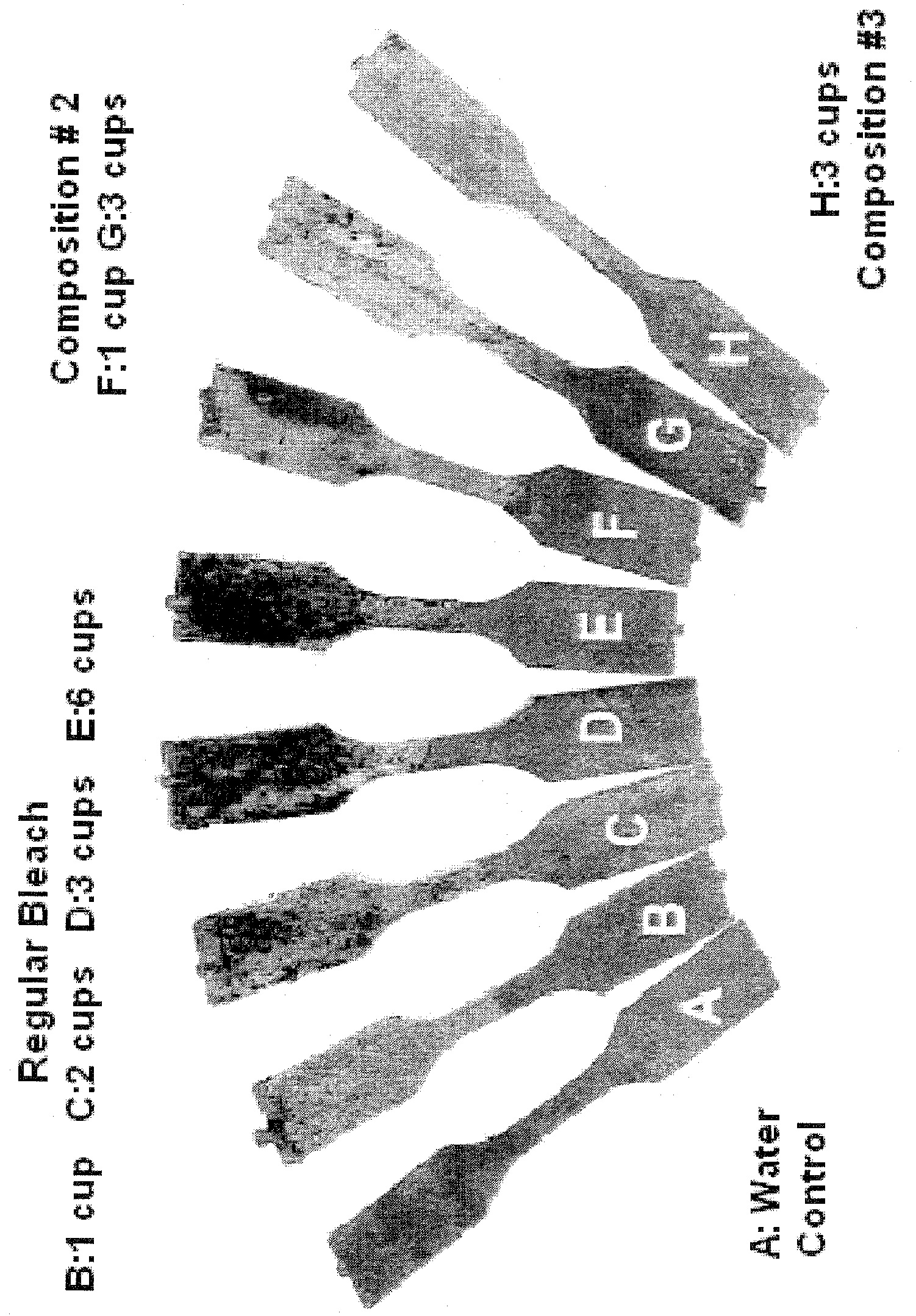Remediation of microfloral and biofilm development from laundering devices
a technology of biofilm and microfloral, which is applied in the direction of detergent bleaching agents, detergent compounding agents, cleaning using liquids, etc., can solve the problems of biofilm development, difficult to remove without mechanical action, and new class of machines are especially prone to biofilm development, etc., to reduce the level of biofilm, reduce the effect of corrosion and maximum effectiveness
- Summary
- Abstract
- Description
- Claims
- Application Information
AI Technical Summary
Benefits of technology
Problems solved by technology
Method used
Image
Examples
Embodiment Construction
[0034]In one embodiment of the present invention is provided a process for remediation of microfloral propagation and biofilm development on internal laundering surfaces of a washing machine that are oxidatively sensitive, comprising the steps of: (a) exposing the laundering surfaces, in the absence of fabric and detergent, to a cleaning solution comprising: a halogen-based oxidant at a level between about 200 to 2500 ppm; an effective level of an alkaline builder selected from the group consisting of silicates, phosphates, carbonates, and mixtures thereof; wherein said effective level of said alkaline builder is that amount capable of reducing the effects of corrosion of said halogen-based oxidant on said laundering surfaces; and less than 200 ppm of a halogen stable surfactant; wherein step (a) provides a contact duration of the cleaning solution with said laundry surfaces of at least 3 minutes, and wherein step (a) is conducted with said cleaning solution at a temperature of at l...
PUM
 Login to View More
Login to View More Abstract
Description
Claims
Application Information
 Login to View More
Login to View More - R&D
- Intellectual Property
- Life Sciences
- Materials
- Tech Scout
- Unparalleled Data Quality
- Higher Quality Content
- 60% Fewer Hallucinations
Browse by: Latest US Patents, China's latest patents, Technical Efficacy Thesaurus, Application Domain, Technology Topic, Popular Technical Reports.
© 2025 PatSnap. All rights reserved.Legal|Privacy policy|Modern Slavery Act Transparency Statement|Sitemap|About US| Contact US: help@patsnap.com

